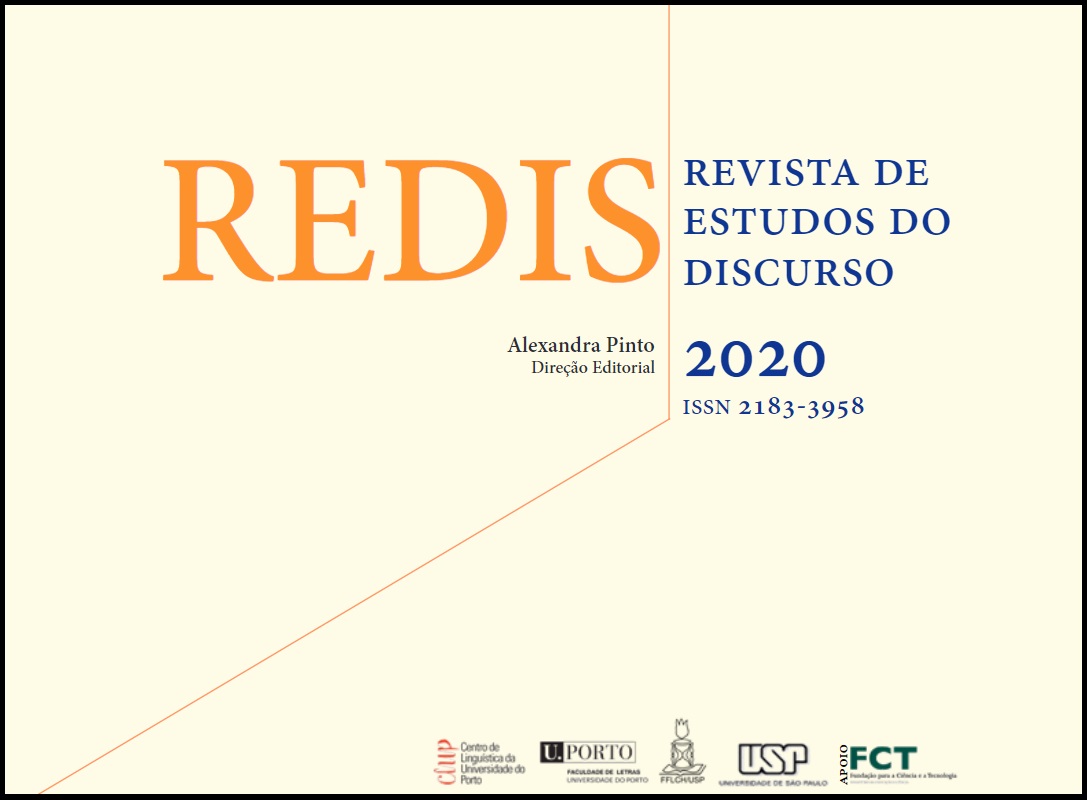Bias detection in a sentence
DOI:
https://doi.org/10.21747/21833958/red9a2Keywords:
Biased Language, Subjectivity, Attenuation, Modality, Legal DiscourseAbstract
The present work analyses a legal judgment, with the aim of assessing if, in it, there are marks of its authors’ subjectivity (a collective of judges). We intend, therefore, to verify if the judges responsible for the judgment leave traces of their position, especially in the reasoning part, which is constituted by the arguments of the judges to justify their final decision - note that legal judgments are a part of the legal discourse (free of subjectivity). For that, the judgement will be analyzed according to five categories, which represent linguistic mechanisms to express subjective language: polyphony; polyphonic negation; intensifiers and minimizers; expressions with (positive or negative) semantic polarity and, finally, expressions with modal values. The results obtained allow us to state that, even though they are not always completely explicit, these mechanisms are used to convey the opinions of the collective of judges, whose position goes in the direction of excusing the offender, while disbelieving the voice of the victim.
References
Benveniste, E. (1966). De la subjectivité dans le langage. Problèmes de linguistique générale, 1. Paris: Gallimard, p. 258-266.
Beukeboom, C. & Burgers, C. (2017). Linguistic Bias. In Oxford Research Encyclopedia. Londres: Oxford University Press. Disponível em DOI: http://doi.org/10.1093/acrefore/9780190228613.013.439. Acedido em Outubro 2020.
Briz, A. & Albelda, M. (2013). Una propuesta teórica y metodológica para el análisis de la atenuación lingüística en espanoly português. La base de un proyecto en común (ES.POR.ATENUACIÓN).
Campos, M. H. C. (1998). Dever e Poder - um Subsistema Modal do Português. Lisboa: Fundação Calouste Gulbenkian.
Charadeau, P. & Maingueneau, D. (2004). Dicionário de Análise do Discurso. Tradução de Fabiana Komesu. São Paulo: Editora Contexto.
Ducrot, O. (1973). La preuve et le dire - Language et Logique. Paris: Mame.
Ducrot, O. (1984). Le dire et le dit. Paris: Les Éditions de Minuit.
Fairclough, N. (1989). Language and Power. Londres: Longman,
Fairclough, N. (1992). Discourse and Social Change. Cambridge: Polity Press.
Fairclough, N. (2005). Análise Crítica do Discurso como método em pesquisa social científica / Critical Discourse Analysis as a methor in social scientific research. Tradução de Iran Ferreira de Melo. (2012). In Linha d’Água, n. 25(2). Pp. 307-329.
Figueiredo, R. M. (2015). Acórdão: um gênero do discurso jurídico. In Memento - Revista de Linguagem, Cultura e Discurso. Volume 6(2), jul./dez. 2015. Acedido em Setembro 2020 em http://perio-dicos.unincor.br/index.php/memento/article/view/2662/pdf_68
Jakobson ([1957] 1963). Les embrayeurs, les catégories verbales et le verbe russe. In Essais de Lin-guistique Générale I. Paris: Les Éditions de Minuit. pp 176-196.
Kerbrat-Orecchioni, C. 1980. L’énonciation de la subjectivité dans le langage. Paris: Armand Colin.
Martins, A. (2010). Evidencialidade no Discurso dos Media. Estudos Linguísticos/Linguistic Studies, 5. Lisboa: Edições Colibri/CLUNL. pp. 235-245.
Oliveira, F. & Mendes, A. (2013). Modalidade. Raposo, E. P. et al.(Eds). Gramática do Português, Volume 1. Lisboa: Fundação Calouste Gulbenkian.
Paulinelli, M. & Silva, A. (2015). Análise argumentativa de um acórdão: quadro institucional, doxa e representações sociais em um gênero judicial. In Alfa: Revista de Linguística, Volume 59(3), set./dez. 2015. Acedido em Setembro 2020 em doi: https://doi.org/10.1590/1981-5794-1509-3
Prabhakaran, V; Rambow, O. & Diab, M. (2012). Predicting Overt Display of Power in Written Dia-logs. Acedido em Abril 2020 em https://www.researchgate.net/publication/228535788_Predicting_ Overt_Display_of_Power_in_Written_Dialogs.
Prata, A.; Veiga, C. & Vilalonga, J. M. (2009). Dicionário jurídico: Direito penal, direito processual penal, Volume 2. Coleção Dicionários Jurídicos. Coimbra: Almedina.
Recasens, M. et al. (2013). Linguistic Models for Analyzing and Detecting Biased Language. Acedido em Março 2020 em https://nlp.stanford.edu/pubs/neutrality.pdf
Rillof, E. & Wiebe, J.. (2003). Learning Extraction Patterns for Subjective Expressions. Proceedings of the 2003 Conference on Empirical Methods in Natural Language Processing (EMNLP-03). Disponível em https://www.cs.utah.edu/~riloff/pdfs/emnlp03.pdf.
Searle, J. (1979). Expression and Meaning - Studies in the theory of Speech Acts. Cambridge: Cambridge University Press.
Soares, M.C. P. (1996). Modificação de Atos Ilocutórios, em Português. Tese de Doutoramento. Porto: Faculdade de Letras da Universidade do Porto.
Wiebe, J.; Wilson, T. & Cardie, C. (2005). Annotating Expressions of Opinions and Emotions In Language. Language Resources and Evaluation. Volume 39(2),164-210. doi: http://doi.org/10.1007/s10579-005-7880-9
Downloads
Published
How to Cite
Issue
Section
License
Copyright (c) 2020 Redis: Revista de Estudos do discurso

This work is licensed under a Creative Commons Attribution 4.0 International License.
The authors give to REDIS. Revista de Estudos do Discurso the exclusive right to publish its texts, in any medium, including their reproduction and sale in paper or digital format, as well as their availability in a free access regime in databases.
















